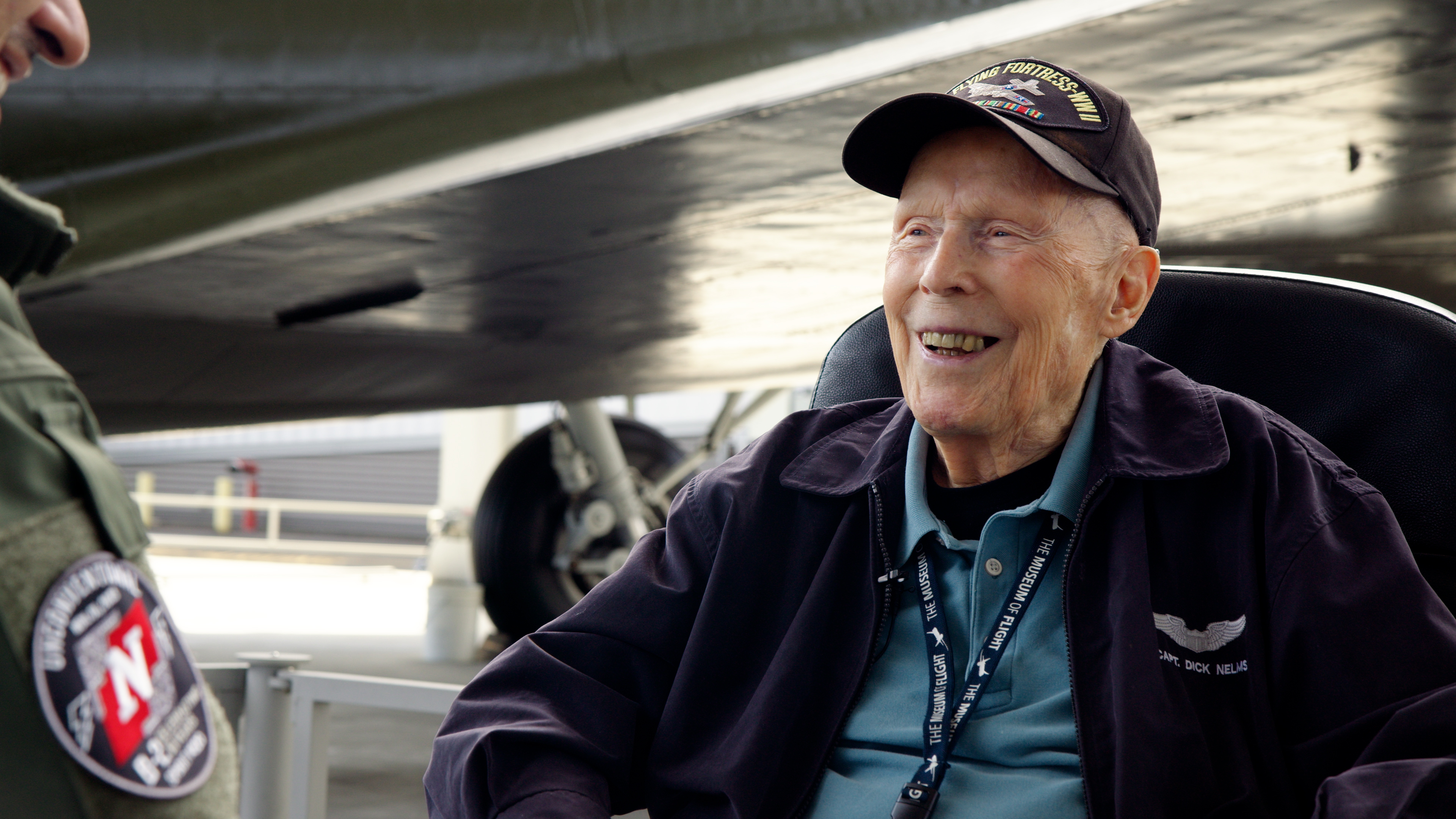World
At 101, World War II captain recalls: “My brain started becoming my enemy”

“Learn how to handle fear,” is the advice of 101-year-old Dick Nelms for today’s service men and women nearly 80 years after flying 35 missions over Nazi-occupied territories as captain of a B-17 Flying Fortress bomber.
“I’m going to go back to combat for a second,” Nelms told Naveed Jamali, host of the Newsweek original series “Unconventional” in an interview that can be seen in full here.
“We were flying in formation. An 88-millimeter probably bursts right in front of us… You hear pieces of flak—steel—punching holes through the aluminum skin. A sickening sound,” Nelms said.
“My brain started becoming my enemy. It said, ‘If that had gone off a second later you’d be on your way down, this may be the day you don’t go home,’ and things like that.
“You know what I did? I said ‘everything is okay because it went off when it did. And that helped me conquer fear,” Nelms said.
“A chaplain told me, ‘When you’re up there, you have no control of where those shells are going to burst up there. But you do have control of what’s going on up here.’,” he said.
“And that helped a lot… Why be scared? You’re making yourself less important to the total operation if you’re going to be terrified.”
Nelms decided to enlist after the Japanese attack on Pearl Harbor on December 7, 1941 brought the United States into the war. But he had to wait until he was 19. He also needed his mother’s signature to be able to join the Army Air Force aviation cadet corps.
“I had that application put it in front of her for breakfast every morning. Three months. I said, mom, I stood up. I said, ‘Mom, look at me 5′ 7 ½,” 135 pounds. What chance am I going to have on the ground?’,” he said. “She signed it. I took it out, passed the exams, got into the pilot program.”
Nelms said he had not initially wanted to fly a plane as big as the B-17, on which he became a co-pilot. It was the fighter planes that were scarier than the flak, Nelms said.
“Not only were they more accurate in shooting you down, but it was much more personal,” he said. “At least the flak is impersonal. You don’t know where it’s going to go off.”
At 21 years old, he found himself in charge of a ten-man crew flying combat missions over France and Germany.
“By then you had learned to conquer fear, or you shouldn’t be up there.
“And everything seemed to fall in place. I never had that admonish this crew…
“I see pictures like the one, the “Masters of the Air,” where they’re all yelling to each other. We’d go fly a whole mission and not a word would be spoken… Why speak, you know?
“The only time you speak would be if you had fighter attacks. You know, 12:00 level, 3:00 low, things like that so the gunners would aim at that particular spot, but other than that there’s nothing to talk about,” he said.
Newsweek
Nelms made it to 35 combat missions, saying the feel of the last mission was “Not a heck of a lot different.”
“Thousands of us got home. Thousands of us are still over there. I have friends under white crosses right now. And that’s one of the reasons I’m here. I want to let people know what the Eighth Air Force did, and losing almost 30,000 men doing it,” he said.
After the war, veterans had to decide whether to enlist in the regular Army Air Force or become a civilian.
“I asked the general who was interviewing me, ‘Sir, will I still be flying?’ ‘Oh, sure now should be flying, but probably with a pencil’,” he said.
“In other words, they wanted… me sitting behind a desk, and they could get pilots, just like that. And I said, ‘Well, thank you, sir. You’ve hit it on the nose, I am going to art school to become a commercial artist.'”
And that was how Nelms moved to Seattle.
“I came up and ended up in art school, and in three years became just good enough to be employable. And after about two years of being employed, I started out on my own. I wanted to freelance. I didn’t want people telling me what to do,” he said.
Nelms still serves his community almost every week, volunteering at The Museum of Flight in Seattle.
“What I tell people when they get old like me—if you get lonesome, volunteer. That’s what saved my life here, these wonderful people that support me. In six months I’ll be 102.”










